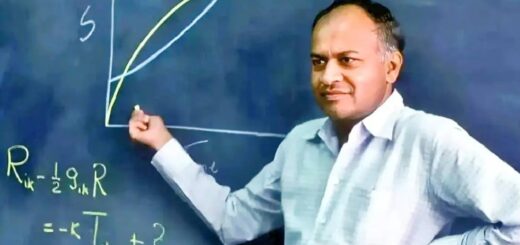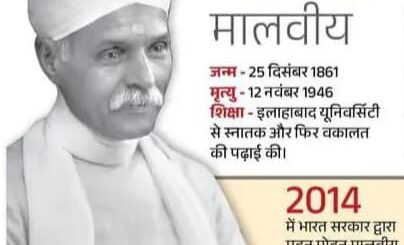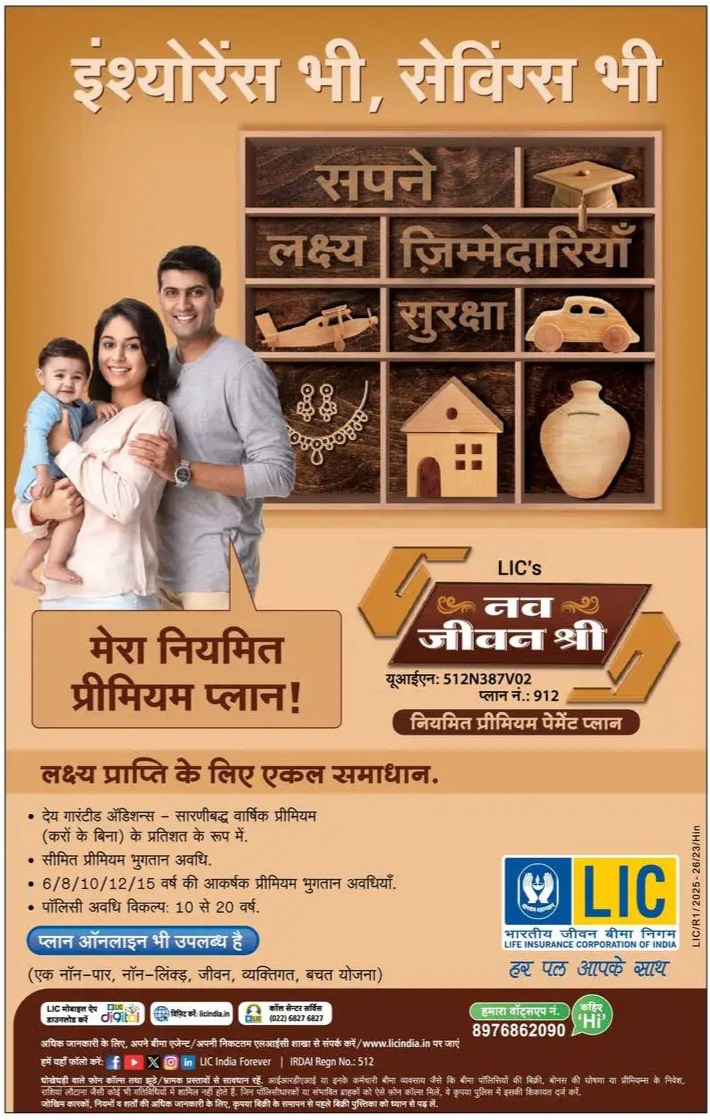अरबिंदो घोष
अरबिंदो घोष

अरबिंदो घोष : जन्म: 15 अगस्त, 1872, कोलकाता आधुनिक काल में भारत में अनेक महान क्रांतिकारी और योगी हुए हैं, अरबिंदो घोष उनमें अद्वितीय हैं। अरविंदो घोष कवि और भारतीय राष्ट्रवादी थे जिन्होंने आध्यात्मिक विकास के माध्यम से सार्वभौमिक मोक्ष का दर्शन प्रतिपादित किया।
जीवन परिचय
अरबिंदो घोष का जन्म बंगाल के कलकत्ता, वर्तमान कोलकाता, भारत में एक सम्पन्न परिवार में 15 अगस्त,1872 को हुआ। उनके पिता का नाम डॉक्टर कृष्ण धन घोष और माता का नाम स्वर्णलता देवी था। इनके पिता पश्चिमी सभ्यता में रंगे हुए थे। इसलिए उन्होंने अरबिंदो को दो बड़े भाइयों के साथ दार्जिलिंग के एक अंग्रेज़ी स्कूल में पढ़ने के लिए भेज दिया। दो वर्ष बाद सात वर्ष की अवस्था में उनके पिता उन्हें इंग्लैण्ड ले गए। अरविंद को भारतीय एवं यूरोपीय दर्शन और संस्कृति का अच्छा ज्ञान था। यही कारण है कि उन्होंने इन दोनों के समन्वय की दिशा में उल्लेखनीय प्रयास किया। कुछ लोग उन्हें भारत की ऋषि परम्परा (संत परम्परा) की नवीन कड़ी मानते हैं। श्री अरविंद का दावा है कि इस युग में भारत विश्व में एक रचनात्मक भूमिका निभा रहा है तथा भविष्य में भी निभायेगा। उनके दर्शन में जीवन के सभी पहलुओं का समावेश है। उन्होंने अनेक महत्त्वपूर्ण विषयों पर भी अपने विचार व्यक्त किए हैं, यथा संस्कृति, राष्ट्रवाद, राजनीति, समाजवाद आदि साहित्य, विशेषकर काव्य के क्षेत्र में उनकी कृतियां बहुचर्चित हुई हैं।
शिक्षा
अरबिंदो घोष की शिक्षा दार्जिलिंग में ईसाई कॉन्वेंट स्कूल में प्रारम्भ हुई और लड़कपन में ही उन्हें आगे की स्कूली शिक्षा के लिए इंग्लैण्ड भेज दिया गया। इंग्लैण्ड में एक अंग्रेज़ परिवार में रहने और पढ़ने की व्यवस्था कर तीनों भाइयों को छोड़ वह वापस आ गये। इंग्लैण्ड में अरबिंदो घोष की भेंट बड़ौदा नरेश से हुई। बड़ौदा नरेश अरबिंदो की योग्यता देखकर बहुत प्रभावित हुए और उन्होंने अरबिंदो को अपना प्राइवेट सेक्रेटरी नियुक्त कर लिया। अत: वह भारत लौट आये। अरबिंदो ने कुछ समय तक तो यह कार्य किया, किन्तु फिर अपनी स्वतंत्र विचारधारा के कारण उन्होंने नौकरी छोड़ दी। वह बड़ौदा कॉलेज में पहले प्रोफेसर बने और फिर बाद में वाइस प्रिंसीपल भी बने। उन्होंने कैम्ब्रिज विश्वविद्यालय में प्रवेश लिया, जहाँ पर वे तीन आधुनिक यूरोपीय भाषाओं के कुशल ज्ञाता बन गए। 1892 में भारत लौटने पर उन्होंने बड़ौदा, वर्तमान वडोदरा और कोलकाता में विभिन्न प्रशासनिक व प्राध्यापकीय पदों पर कार्य किया। बाद में उन्होंने अपनी देशज संस्कृति की ओर ध्यान दिया और पुरातन संस्कृत सहित भारतीय भाषाओं तथा योग का गहन अध्ययन प्रारम्भ कर दिया।
अरबिंदो का दृष्टिकोण
श्री अरविंद के अनुसार वर्तमान मानसिकतायुक्त व्यक्ति, विकास का चरम लक्ष्य नहीं है। विकास का लक्ष्य मानसिकता का अतिक्रमण करके मनुष्य को वहाँ ले जाना है, जो संस्कृति, जन्म-मृत्यु और काल से परे हो। अतिमानसिक ज्ञान की प्राप्ति के लिए आंतरिक तीव्र अभीप्सा, दैहिक, प्राणिक और मानसिक अंगों का दिव्य के प्रति पूर्ण समर्पण और दिव्य द्वारा उनका रुपान्तरण नितांत आवश्यक है। यही श्री अरविंद के सर्वांगयोग की पूर्व भूमिका है। मानसिक से अतिमानसिक ज्ञान पर एकाएक नहीं पहुँचा जा सकता है। आध्यात्मिक विकास क्रमिक अभिव्यक्ति के तर्क पर आधारित है। अत: आत्मरूपान्तरण के सोपानों को पार करके ही अतिमानस अथवा दिव्यविज्ञान तक पहुँचा जा सकता है। ये सोपान या श्रेणियां इस प्रकार हैं- सामान्य मानसिकता, उच्चतर मानस, प्रदीप्त मानस, सम्बोधि, अधिमानस, अतिमानस।
SRI AUROBINDO TIMELINE
1872 :
Sri Aurobindo was born
1893 :
Returned to India, after attaining his education in Cambridge University
1906 :
Became the editor of the newspaper, Bande Mataram
1907 :
Was viewed as a new leader, during a convention of Indian nationalists
1908 :
Arrested for the possession of weapons
1910 :
Withdrew from politics and went to Pondicherry, in French India, in order to concentrate on his inner life and work
1926 :
Established of Sri Aurobindo Ashram & retreated from his Ashram life
1950 :
Left for the holy abode
तत्वमीमांसा
श्री अरविंद आध्यात्मिक अनुभूतियों के स्रोत के रूप में वेदान्त की विभिन्न शाखाओं को मानते हैं। वे परमार्थ तत्व को आध्यात्मिक मानते हैं। उनके अनुसार जड़ तत्व एक दूसरे का निषेध नहीं करते बल्कि वे एक दूसरे को स्वीकार करते हैं। विश्व ज्ञान प्राप्त करने पर ही बुद्धि एक और अनेक को सम्यक् परिप्रेक्ष्य में देख पाती है। इस ज्ञान की उपलब्धि होने पर दोनों, जड़ और चेतन परस्पर विरोधी नहीं बल्कि एक दूसरे के अभिन्न पहलू के रूप में दिखते हैं। इसी प्रकार शांत निश्चल ब्रह्म के धनात्मक और ऋणात्मक पहलू हैं। ऐसी स्थिति में शांत निश्चल और आत्मस्थित आनन्दमय ब्रह्म जगत की सत्ता का निराकरण न करके वह नाद या शब्द उत्पन्न करता है जो कि निरन्तर लोगों का सृजन करता है।
श्री अरविंद शंकर की भांति यह स्वीकार करते हैं कि ब्रह्म परम सत्ता है। यह सभी वस्तुओं, गतियों और सत्ताओं का सत्य है। यद्यपि वह सभी में अभिव्यक्त और समान रूप से विद्यमान रहता है, तथापि मनुष्य अपनी सीमित और सापेक्ष बुद्धि के कारण इसके स्वरूप को पूर्णत: ग्रहण नहीं कर पाता। अपने बौद्धिक प्रत्ययों का अतिक्रमण करने के पश्चात ही हम यह ज्ञान प्राप्त कर सकते हैं कि ब्रह्म के लिए अवयवी और अवयव के संप्रत्ययों का प्रयोग नहीं किया जा सकता। प्रत्येक वस्तु वह ममय और वह निरवयव या अखंड ब्रह्म में अनुप्राणित है। यह ब्रह्म विशुद्ध सत् और निरपेक्ष है। ज्ञान के बौद्धिक रूपों का अतिक्रमण कर सक्षम परम तादात्म्य के द्वारा ही उसका ज्ञान प्राप्त हो सकता है। वह अनन्त अपरिभाष्य, परिमाण रहित और अरूप होता हुआ भी विचारगम्य और जगत प्रपंच का अधिष्ठान है। इस प्रकार की सत्ता को मानने का अभिप्राय यह नहीं की गति शक्ति और सम्भूति असत् है। उन्होंने इस द्विविध सत्य को स्वीकार किया कि स्थाणु रूप शिव और गतिशील काली दोनों ही सत्य हैं। शिव और काली, ब्रह्म और शक्ति अभिन्न हैं। सत्ता में शक्ति निरन्तर विद्यमान रहती है। विश्राम और गति शक्ति का स्वभाव है। अत: महत्त्वपूर्ण प्रश्न यह नहीं है कि गति कैसे आरम्भ हुई, अपितु यह कि वह अपने को विभिन्न रूपों में अभिव्यक्त क्यों करती है। श्री अरविंद के अनुसार निश्चल और निस्पंद ब्रह्म अपने आत्मानंद को अनन्त गति और वैचित्य को उन्मुक्त करता है। उसकी शक्ति की सृजनात्मक क्रिया का यही उद्देश्य या ध्येय है। सच्चिदानंद ब्रह्म ने अपने आप को रूप के अंतर्गत प्रक्षिप्त किया है।
श्री अरविंद की इन मान्यताओं के फलस्वरूप जगत माया नहीं है। वे शंकर के मायावाद को अस्वीकार करते हैं और मानते हैं कि जगत सर्वांगसत् है। जो जड़ है, वह अचेतन नहीं, किन्तु पूर्वचेतन है। वह चैतन्य की पूर्वावस्था है। विकास की प्रक्रिया में चैतन्य में परिणत होना उसके लिए स्वाभाविक है। इस प्रकार श्री अरविंद ने केवल मायावाद का ही नहीं अपितु जड़ और चेतन के द्वैतावाद और शुद्ध जड़वाद को भी अस्वीकार किया और सिद्ध करने का प्रयास किया की जगत स्वभावत: आध्यात्मिक है ब्रह्म, जिसका स्वरूप सत्, चित् और आनंद है सर्वत्र विद्यमान है। श्री अरविंद जगत और जीव दोनों को ही सत् मानते हैं। ये दोनों दो प्रमुख प्रकट तत्व हैं, जिनमें अज्ञेय अभिव्यक्त होता है और जिनके द्वारा उसका ज्ञान प्राप्त होता है। ये माया या मिथ्या नहीं है। श्री अरविंद के अनुसार व्यक्ति का जीवन निरर्थक नहीं है। जगत में मनुष्य की भूमिका यह है कि वह जगत में रहता हुआ चैतन्य के विकास का अवसर प्राप्त करता है। मनुष्य पशु प्रवृत्ति और पशु क्रियाओं से जीवन आरम्भ करके अपने ध्येय, दिव्य जीवन और दिव्य अस्तित्व को प्राप्त करता है।
अब प्रश्न उठता है कि यदि जो कुछ है उसमें सत्, चित्, शक्ति तथा आनन्द निरन्तर विद्यमान हैं तो विश्व में दु:ख क्यों है अथवा अशुभ का आविर्भाव किस प्रकार होता है। श्री अरविंद यह मानते हैं कि दु:ख तथा अशुभ विकास क्रम की एक स्थिति विशेष को प्रकट करते हैं। मनुष्य के सुख-दुख उसके अहंकार के द्योतक हैं। विकास क्रम अप्रकट में रूप से कार्यरत दिव्य चित् शक्ति जब मनुष्य का विकास कर देगी अथवा ईश्वर की अग्नि जब पृथ्वी के कामनांकुरों को जला देगी तब वह सुख-दु:ख के मूल में अंतर्निहित अप्रकट तत्व और उसके आनन्द रस का नए रूप में अनुभव करेगा। श्री अरविंद की इस प्रकार की व्याख्या का कारण उनकी यह मान्यता है कि समस्त अनुभवों और रूपों के मूल में आनंद विद्यमान है। सत् की चित् शक्ति विकास क्रम में अपना आनंद ही वस्तुत: खोजती रहती है। सत्ता के आनन्द का वही अर्थ नहीं है, जिस अर्थ में कि हम सुख अथवा हर्ष का साधारणतया प्रयोग करते हैं। सत्ता आनंद का सार्वभौमिक, असीम और स्वयंभू है। सुख हर्ष आदि की भांति आनंद विशेष कारणों पर आधारित नहीं है। जब मनुष्य अपने अन्दर निहित इस अप्रकट आनंद को विकास क्रम में प्राप्त कर लेगा तभी यह उपनिषद वाक्य सार्थक होगा कि आनंद से ही सभी जीवन उत्पन्न होते हैं, आनंद में ही रहते हैं और अन्तत: आनंद में ही विलीन होते हैं।
रूपान्तरण की स्थितियाँ
रूपान्तरण की तीन प्रमुख स्थितियां हैं- चैत्यीकरण, आध्यात्मीकरण और अतिमानसीकरण। पूर्णरूपान्तर के लिए सभी अंगों की तत्परता एवं अतिमानसिक प्रकाश का अवरोहण आवश्यक है। इसके लिए चैत्यीकरण आवश्यक है। हृदय के अंतर्गत विद्यमान दिव्य प्रकाश को श्री अरविंद ‘चैत्यपुरुष’ की संज्ञा देते हैं। आध्यात्मिक रूपान्तरण के लिए चैत्यपुरुष की अभिव्यक्ति आवश्यक है। चैत्यपुरुष के विकास के फलस्वरूप उच्च चेतना हमारे अंदर प्रवेश करके हमारे सम्पूर्ण अस्तित्व का रूपान्तरण कर देगी। अतिमानस ब्रह्म का बृहत् आत्म विस्तार है। अतिमानस और मानस में अन्तर होते हुए भी दोनों संबंधित हैं। मानस, अतिमानस से ही आविर्भूत हुआ है। परन्तु बीज जिस अतिमानस को प्राप्त करता है, उसमें और सर्वोच्च अतिमानस में, जो सर्वज्ञाता और सर्वशक्तिमान ईश्वर का यप है, विभेद है।
समाज दर्शन
समाज दर्शन समाज के अध्ययन द्वारा उसमें अंतर्निहित दिव्यता को समझने और पहचानने का प्रयास है। समाज दार्शनिकों ने प्राय: अपना ध्यान बाह्य तथ्यों, यथा नियमों, संस्थाओं, परम्पराओं, राजनीति और आर्थिक परिस्थितियों आदि पर ही केन्द्रित किया है। उन्होंने उन प्रमुख मनोवैज्ञानिक तथ्यों की अवहेलना की है, जो मनुष्य जैसे भावनात्मक और विचारशील प्राणी के जीवन में नितांत महत्त्वपूर्ण हैं। मनुष्य और समाज का मनोवैज्ञानिक विश्लेषण अत्यन्त जटिल है। लामप्रेक्त के अनुसार समाज के विकास की मनोवैज्ञानिक स्थितियां ये हैं- प्रतीकात्मक, प्रारुपिक, रूढ़िपरक तथा व्यक्तिपरक। समाज का विकास इन स्थितियों के माध्यम से इस प्रकार के मनोवैज्ञानिक वृत का रूप धारण कर लेता है। इस वृत से होकर ही राष्ट्र और सभ्यता को गुज़रना पड़ता है। परन्तु श्री अरविंद के अनुसार विकासक्रम की इस प्रकार की निश्चित व्याख्या और वर्गीकरण वस्तुत: प्रस्तुत नहीं किया जा सकता। प्रकृति की वक्र गति को सीधी रेखा की भांति नहीं समझाया जा सकता है। लामप्रेक्त का सिद्धांत क्रमबद्ध स्थितियों के निहितार्थ एवं उनके अनिवार्य अनुक्रम के ध्येय के विषय में कुछ भी सूचित नहीं करता। परन्तु श्री अरविंद के अनुसार यदि लामप्रेक्त द्वारा विवेचित समाज के विकास की स्थितियों के निहितार्थों का अनुशीलन किया जाए, तो वे ऐतिहासिक विकास के सूक्ष्मतम रहस्यों एवं तथ्यों की ओर संकेत करती है। मानव समाज की आरम्भिक स्थितियों के अध्ययन और अनुशीलन उस मानसिकता को प्रकट करते हैं जो उसकी परम्पराओं, विचारों और संस्थाओं में अप्रकट रूप में विद्यमान रहती हैं।
प्रारुपिक समाज की महत्त्वपूर्ण विशेषता यह है कि इसने उन उदात्त सामाजिक आदर्शों को जन्म दिया है, जो निरन्तर ही मनुष्य को प्रभावित और अनुप्राणित करते रहते हैं। प्रारुपिक स्थिति के पश्चात् समाज की रूढ़िपरक स्थिति आती है। इसमें विचार और आदर्शों का स्थान बाह्य रूप यथा वेश-भूषा, रहन-सहन आदि ग्रहण कर लेते हैं। परन्तु रूढ़ि और सत्य का भेद असह्य हो जाने पर मनुष्य की बुद्धि मुखर हो जाती है। ऐसी स्थिति में वह रूढ़ियों, प्रतीकों और प्रारूपों का विरोध करती है। फलत: मनुष्य अपने खोये हुए नैतिक बोध और भावात्मक इच्छा को पुन: खोजने का प्रयास करता है। यह समाज की व्यष्टिपरक स्थिति है। यह विद्रोह उन्नति, स्वतंत्रता और विश्लेषणात्मक बुद्धि तथा भौतिक विज्ञानों के विकास का युग है। आत्म-विकास, अस्तित्व के नियम और शक्ति को जानकर उन्हें कार्यरूप में परिणत करना ही वस्तुत: व्यक्ति के जीवन का प्रमुख ध्येय है। परन्तु पाश्चात्य मानवता के ऐतिहासिक युग में आत्मा को उसके उचित अर्थ में नहीं ग्रहण किया गया। इसका परिणाम यह हुआ कि जीवन तमाम पूर्वग्रहों से ग्रस्त होकर युद्ध से आक्रान्त हो उठा। अत: हमारे लिये ये नितांत वांछनीय है कि हम वास्तविक आत्मविषमतावाद को झूठे आत्मनिष्ठावाद से अलग करें और पहचानें। सच्चा आत्मनिष्ठावाद मनुष्य की पृथक सत्ता का अनुमोदन करने के साथ साथ दूसरे व्यक्तियों की पृथक सत्ता और स्वतंत्रता का अनुमोदन करता है। समाज जब अतिमानसिक ज्योति से प्रकाशित होगा तभी मानवता उस दिव्यत्व को प्राप्त करेगी, जो उसकी अमर धरोहर है। इसी प्राप्ति के लिए हमें योग को अपनाना होगा। योग आत्मा की खोज का सचेतन माध्यम है।
सिद्धान्त
अरबिंदो घोष के सार्वभौमिक मोक्ष के सिद्धान्त के अनुसार, ब्रह्म के साथ एकाकार होने के दोमुखी रास्ते हैं- बोधत्व ऊपर से आता है (प्रमेय), जबकि आध्यात्मिक मस्तिष्क यौगिक प्रकाश के माध्यम से नीचे से ऊपर पहुँचने की कोशिश करता है (अप्रमेय)। जब ये दोनों शक्तियाँ एक–दूसरे में मिलती हैं, तब संशय से भरे व्यक्ति का सृजन होता है (संश्लेषण)। यह यौगिक प्रकाश, तर्क व अंतर्बोध से परे अंततः व्यक्ति को वैयक्तिकता के बंधन से मुक्त करता है। इस प्रकार, अरबिंदो ने न केवल व्यक्ति के लिए, बल्कि समूची मानवता के लिए मुक्ति की तार्किक पद्धति का सृजन किया।
साहित्यिक कृतियाँ
श्री अरविंद के दर्शन को भी वेदान्त के परिप्रेक्ष्य में ही समझा जा सकता है। स्वानुभूति के अतिरिक्त वेद, उपनिषद और पुराणवस्तुत: उनके दर्शन के स्रोत हैं। उनका दर्शन सर्वस्वीकृति का वर्णन है। उनके अनुसार विश्वातीत सत्य की स्वीकृति में ही विश्व और व्यक्ति की सत्यता भी अंतर्निहित है। वे दार्शनिक और विचारक होने के साथ-साथ योगी भी हैं। उनका दर्शन और योग जीवन की दिव्यता पर बल देता है। अरबिंदो घोष की वृहद और जटिल साहित्यिक कृतियों में दार्शनिक चिंतन, कविता, नाटक और अन्य लेख सम्मिलित हैं। उनकी कृतियाँ हैं—
एस्सेज़ ऑन गीता (1928)
द लाइफ़ डिवाइन (1940)
कलेक्टेड पोयम्स एण्ड प्लेज़ (1942)
द सिंथेसिस ऑफ़ योगा (1948)
द ह्यूमन साइकिल (1949)
द आईडियल ऑफ़ ह्यूमन यूनिटी (1949)
ए लीजेंड एण्ड ए सिंबल (1950)
ऑन द वेदा (1956)
द फ़ाउन्डेशन ऑफ़ इंडियन कल्चर
राजनीतिक गतिविधियाँ
अरबिंदो के लिए 1902 से 1910 के वर्ष हलचल भरे थे, क्योंकि उन्होंने ब्रिटिश शासन से भारत को मुक्त कराने का बीड़ा उठाया था। बड़ौदा कॉलेज की नौकरी छोड़कर वह कोलकाता चले गए और कोलकाता के ‘नेशनल कॉलेज’ के प्रिंसीपल बने। इस समय तक उन्होंने ‘सादा जीवन और उच्च विचार’ जीवन अपना लिया। उन पररामकृष्ण परमहंस और स्वामी विवेकानंद के साहित्य का बहुत गहन प्रभाव हुआ। सन् 1905 में लॉर्ड कर्ज़न ने पूर्वी बंगाल और पश्चिमी बंगाल के रूप में बंगाल के दो टुकड़े कर दिए ताकि हिन्दू और मुसलमानों में फूट पड़ सके। इस बंग-भंग के कारण बंगाल में जन जन में असंतोष फैल गया।
रवीन्द्रनाथ और अरबिंदो घोष ने इस जन आंदोलन का नेतृत्व किया। इस आंदोलन के विषय में लोकमान्य तिलक ने कहा -बंगाल पर किया गया अंग्रेज़ों का प्रहार सम्पूर्ण राष्ट्र पर प्रहार है। अरबिंदो घोष ने राष्ट्रीयता की भावना जाग्रत करने तथा अंग्रेज़ों का विरोध प्रदर्शित करने के लिए पत्र – पत्रिकाओं में विचारोत्तेजक और प्रभावशाली लेख लिखे। उनके लेखों से जन जन में जागृति आ गयी। ब्रिटिश सरकार उनके इस क्रिया कलापों से चिंतित हो गई। सरकार ने “अलीपुर बम कांड” के अंतर्गत उन्हें जेल भेज दिया। जेल में उन्हें योग पर चिंतन करने का समय मिला। उन्होंने सन् 1907 में राष्ट्रीयता के साथ भारत को “भारत माता” के रूप में वर्णित और प्रतिष्ठित किया। उन्होंने बंगाल में “क्रांतिकारी दल” का संगठन किया और उसका प्रचार और प्रसार करने को अनेक शाखाएं खोली और वे स्वयं उसके प्रधान संचालक बने रहे। खुदीराम बोस और कनाईलाल दत्त, यह क्रांतिकारी उनके संगठन के ही क्रांतिकारी थे। इन गतिविधियों के कारण अरबिंदो घोष अधिक दिनों तक सरकार की नज़रों से छिपे नहीं रह पाये और उन्हें फिर से जेल जाना पड़ा। वह अपनी राजनीतिक गतिविधियों और क्रान्तिकारी साहित्यिक प्रयासों के लिए 1908 में बन्दी बना लिए गए। 1906 से 1909 तक सिर्फ़ तीन वर्ष प्रत्यक्ष राजनीति में रहे। इसी में देश भर के लोगों के प्रिय बन गए। नेताजी सुभाष चन्द्र बोस लिखते है- जब मैं 1913 में कलकत्ता आया, अरबिंदो तब तक किंवदंती पुरुष हो चुके थे। जिस आनंद तथा उत्साह के साथ लोग उनकी चर्चा करते शायद ही किसी की वैसे करते।[1] दो वर्ष के बाद ब्रिटिश भारत से भागकर उन्होंने दक्षिण–पूर्वी भारत में फ़्राँसीसी उपनिवेश पाण्डिचेरी में शरण ली, जहाँ उन्होंने अपना शेष जीवन पूरी तरह से अपने दर्शन को विकसित करने में लगा दिया। उन्होंने वहाँ पर आध्यात्मिक विकास के अन्तर्राष्ट्रीय सांस्कृतिक केन्द्र के रूप में एक आश्रम की स्थापना की, जिसकी ओर विश्व भर के छात्र आकर्षित हुए।
www.examguider.com
भारत के स्वतन्त्र होते ही राष्ट्रीय और अंतर्राष्ट्रीय परिस्थितियों का आकलन करते हुए श्री अरबिंदो ने भविष्यवाणी की थी – भारत एक बार फिर एशिया का नेता होकर समस्त भूमंडल को एकात्मा की मूलभूत शृंखला में आबद्ध करने का महान कार्य सम्पन्न करेगा। भारत की आध्यात्मिकता यूरोप और अमेरिका में प्रवेश कर रही है। इसकी गति थमेगी नहीं, दिन प्रतिदिन बढ़ती ही जाएगी। वर्तमान विपदाओं के बीच लोगों की आँखें आशा के साथ अधिकाधिक उसकी ओर मुड रही हैं और लोग केवल शास्त्रों का ही नहीं, बल्कि उसकी आन्तरिक और आध्यत्मिक साधना का अधिकाधिक आश्रय ग्रहण कर रहे हैं। [2]
मृत्यु
पांडिचेरी आने के बाद वे सांसारिक कार्यों से अलग होकर आत्मा की खोज में लग गए। पांडिचेरी आने के बाद अरबिंदो घोष अंत तक योगाभ्यास करते रहे और उन्हें परमात्मा से साक्षात्कार की अनुभूति हुई। उनके आध्यात्मिक अनुभवों से असंख्य लोग प्रभावित हुए। उनका दृढ़ विश्वास था कि संसार के दु:ख का निवारण केवल आत्मा के विकास से ही हो सकता है जिसकी प्राप्ति केवल योग द्वारा ही संभव है। वे मानते थे कि योग से ही नई चेतना आ सकती है। अरबिंदो घोष की मृत्यु 5 दिसम्बर, 1950 में पाण्डिचेरी में हुई थी।
IN ENGLISH
A LIFE SKETCH : Sri Aurobindo
Sri Aurobindo was born in Calcutta on 15 August, 1872. In 1879, at the age of seven, he was taken with his two elder brothers to England for education and lived there for fourteen years. Brought up at first in an English family at Manchester, he joined St. Paul’s School in London in 1884 and in 1890 went from it with a senior classical scholarship to King’s College, Cambridge, where he studied for two years. In 1890 he passed also the open competition for the Indian Civil Service, but at the end of two years of probation failed to present himself at the riding examination and was disqualified for the Service. At this time the Gaekwar of Baroda was in London. Sri Aurobindo saw him, obtained an appointment in the Baroda Service and left England for India, arriving there in February, 1893.
Sri Aurobindo passed thirteen years, from 1893 to 1906, in the Baroda Service, first in the Revenue Department and in secretariate work for the Maharaja, afterwards as Professor of English and, finally, Vice-Principal in the Baroda College. These were years of self-culture, of literary activity — for much of the poetry afterwards published from Pondicherry was written at this time — and of preparation for his future work. In England he had received, according to his father’s express instructions, an entirely occidental education without any contact with the culture of India and the East. (see note 1) At Baroda he made up the deficiency, learned Sanskrit and several modern Indian languages, assimilated the spirit of Indian civilisation and its forms past and present. A great part of the last years of this period was spent on leave in silent political activity, for he was debarred from public action by his position at Baroda. The outbreak of the agitation against the partition of Bengal in 1905 gave him the opportunity to give up the Baroda Service and join openly in the political movement. He left Baroda in 1906 and went to Calcutta as Principal of the newly-founded Bengal National College.
The political action of Sri Aurobindo covered eight years, from 1902 to 1910. During the first half of this period he worked behind the scenes, preparing with other co-workers the beginnings of the Swadeshi (Indian Sinn Fein) movement, till the agitation in Bengal furnished an opening for the public initiation of a more forward and direct political action than the moderate reformism which had till then been the creed of the Indian National Congress. In 1906 Sri Aurobindo came to Bengal with this purpose and joined the New Party, an advanced section small in numbers and not yet strong in influence, which had been recently formed in the Congress. The political theory of this party was a rather vague gospel of Non-cooperation; in action it had not yet gone farther than some ineffective clashes with the Moderate leaders at the annual Congress assembly behind the veil of secrecy of the “Subjects Committee”. Sri Aurobindo persuaded its chiefs in Bengal to come forward publicly as an All-India party with a definite and challenging programme, putting forward Tilak, the popular Maratha leader at its head, and to attack the then dominant Moderate (Reformist or Liberal) oligarchy of veteran politicians and capture from them the Congress and the country. This was the origin of the historic struggle between the Moderates and the Nationalists (called by their opponents Extremists) which in two years changed altogether the face of Indian politics.
The new-born Nationalist party put forward Swaraj (independence) as its goal as against the far-off Moderate hope of colonial self-government to be realised at a distant date of a century or two by a slow progress of reform; it proposed as its means of execution a programme which resembled in spirit, though not in its details, the policy of Sinn Fein developed some years later and carried to a successful issue in Ireland. The principle of this new policy was self-help; it aimed on one side at an effective organisation of the forces of the nation and on the other professed a complete non-cooperation with the Government. Boycott of British and foreign goods and the fostering of Swadeshi industries to replace them, boycott of British law courts, and the foundation of a system of Arbitration courts in their stead, boycott of Government universities and colleges and the creation of a network of National colleges and schools, the formation of societies of young men which would do the work of police and defence and, wherever necessary, a policy of passive resistance were among the immediate items of the programme. Sri Aurobindo hoped to capture the Congress and make it the directing centre of an organised national action, an informal State within the State, which would carry on the struggle for freedom till it was won.
He persuaded the party to take up and finance as its recognised organ the newly-founded daily paper, Bande Mataram, of which he was at the time acting editor. The Bande Mataram, whose policy from the beginning of 1907 till its abrupt winding up in 1908 when Sri Aurobindo was in prison was wholly directed by him, circulated almost immediately all over India. During its brief but momentous existence it changed the political thought of India which has ever since preserved fundamentally, even amidst its later developments, the stamp then imparted to it. But the struggle initiated on these lines, though vehement and eventful and full of importance for the future, did not last long at the time; for the country was still unripe for so bold a programme.
Sri Aurobindo was prosecuted for sedition in 1907 and acquitted. Up till now an organiser and writer, he was obliged by this event and by the imprisonment or disappearance of other leaders to come forward as the acknowledged head of the party in Bengal and to appear on the platform for the first time as a speaker. He presided over the Nationalist Conference at Surat in 1907 where in the forceful clash of two equal parties the Congress was broken to pieces. In May, 1908, he was arrested in the Alipore Conspiracy Case as implicated in the doings of the revolutionary group led by his brother Barindra; but no evidence of any value could be established against him and in this case too he was acquitted. After a detention of one year as undertrial prisoner in the Alipore Jail, he came out in May, 1909, to find the party organisation broken, its leaders scattered by imprisonment, deportation or self-imposed exile and the party itself still existent but dumb and dispirited and incapable of any strenuous action. For almost a year he strove single-handed as the sole remaining leader of the Nationalists in India to revive the movement. He published at this time to aid his effort a weekly English paper, the Karmayogin, and a Bengali weekly, the Dharma. But at last he was compelled to recognise that the nation was not yet sufficiently trained to carry out his policy and programme. For a time he thought that the necessary training must first be given through a less advanced Home Rule movement or an agitation of passive resistance of the kind created by Mahatma Gandhi in South Africa. But he saw that the hour of these movements had not come and that he himself was not their destined leader. Moreover, since his twelve months’ detention in the Alipore Jail, which had been spent entirely in practice of Yoga, his inner spiritual life was pressing upon him for an exclusve concentration. He resolved therefore to withdraw from the political field, at least for a time.
In February, 1910, he withdrew to a secret retirement at Chandernagore and in the beginning of April sailed for Pondicherry in French lndia. A third prosecution was launched against him at this moment for a signed article in the Karmayogin; in his absence it was pressed against the printer of the paper who was convicted, but the conviction was quashed on appeal in the High Court of Calcutta. For the third time a prosecution against him had failed. Sri Aurobindo had left Bengal with some intention of returning to the political field under more favourable circumstances; but very soon the magnitude of the spiritual work he had taken up appeared to him and he saw that it would need the exclusive concentration of all his energies. Eventually he cut off connection with politics, refused repeatedly to accept the Presidentship of the National Congress and went into a complete retirement. During all his stay at Pondicherry from 1910 onward he remained more and more exclusively devoted to his spiritual work and his sadhana.
In 1914 after four years of silent Yoga he began the publication of a philosophical monthly, the Arya. Most of his more important works, The Life Divine, The Synthesis of Yoga, Essays on the Gita, The Isha Upanishad, appeared serially in the Arya. These works embodied much of the inner knowledge that had come to him in his practice of Yoga. Others were concerned with the spirit and significance of Indian civilisation and culture (The Foundations of Indian Culture), the true meaning of the Vedas (The Secret of the Veda), the progress of human society (The Human Cycle), the nature and evolution of poetry (The Future Poetry), the possibility of the unification of the human race (The Ideal of Human Unity). At this time also he began to publish his poems, both those written in England and at Baroda and those, fewer in number, added during his period of political activity and in the first years of his residence at Pondicherry. The Arya ceased publication in 1921 after six years and a half of uninterrupted appearance. Sri Aurobindo lived at first in retirement at Pondicherry with four or five disciples. Afterwards more and yet more began to come to him to follow his spiritual path and the number became so large that a community of sadhaks had to be formed for the maintenance and collective guidance of those who had left everything behind for the sake of a higher life. This was the foundation of the Sri Aurobindo Ashram which has less been created than grown around him as its centre.
Sri Aurobindo began his practice of Yoga in 1904. At first gathering into it the essential elements of spiritual experience that are gained by the paths of divine communion and spiritual realisation followed till now in India, he passed on in search of a more complete experience uniting and harmonising the two ends of existence, Spirit and Matter. Most ways of Yoga are paths to the Beyond leading to the Spirit and, in the end, away from life; Sri Aurobindo’s rises to the Spirit to redescend with its gains bringing the light and power and bliss of the Spirit into life to transform it. Man’s present existence in the material world is in this view or vision of things a life in the Ignorance with the Inconscient at its base, but even in its darkness and nescience there are involved the presence and possibilities of the Divine. The created world is not a mistake or a vanity and illusion to be cast aside by the soul returning to heaven or Nirvana, but the scene of a spiritual evolution by which out of this material inconscience is to be manifested progressively the Divine Consciousness in things. Mind is the highest term yet reached in the evolution, but it is not the highest of which it is capable.
There is above it a Supermind or eternal Truth-Consciousness which is in its nature the self-aware and self-determining light and power of a Divine Knowledge. Mind is an ignorance seeking after Truth, but this is a self-existent Knowledge harmoniously manifesting the play of its forms and forces. It is only by the descent of this supermind that the perfection dreamed of by all that is highest in humanity can come. It is possible by opening to a greater divine consciousness to rise to this power of light and bliss, discover one’s true self, remain in constant union with the Divine and bring down the supramental Force for the transformation of mind and life and body. To realise this possibility has been the dynamic aim of Sri Aurobindo’s Yoga.
Sri Aurobindo left his body on December 5, 1950. The Mother carried on his work until November 17, 1973. Their work continues.
www.examguider.com

















 +91-94068 22273
+91-94068 22273 
